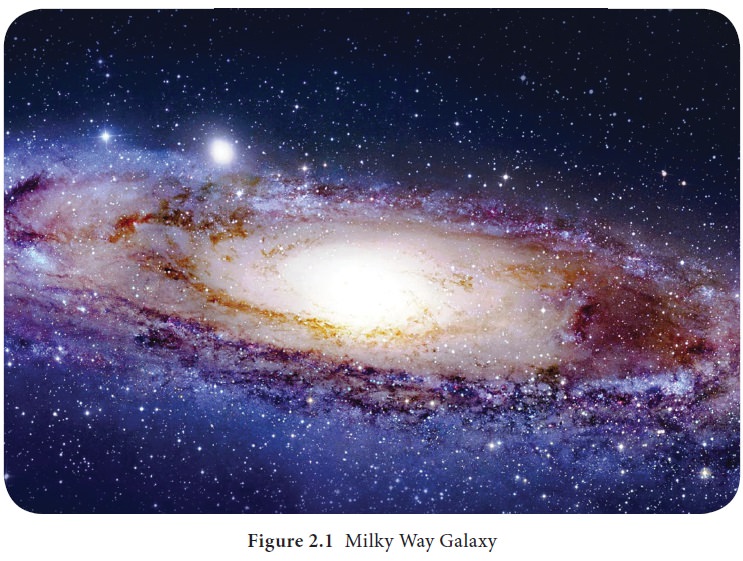Chapter: 11th Geography : Chapter 2 : The Solar system and the Earth
Modern theories of the origin of the Universe
Modern
theories of the origin of the Universe
The most popular argument regarding the origin of
the universe is the Big Bang Theory. It is also called
expanding universe hypothesis. In
1927, Abbe Georges Lemaitre, a Belgian astronomer was the first to propose, a
theory on the origin of the universe. It was Edwin Hubble who provided the
evidence that the universe is expanding. It was called, ‘the Big Bang Theory’. According to it, the universe was formed during a period of inflation that began
about 13.75 billion years ago.
Like a rapidly expanding balloon, it swelled from a
size smaller than an electron to nearly its current size within a fraction of a
second. Matter from the universe was thrown out with great force in all
directions and started expanding outwards. From this matter, many groups of
stars were formed which we call ‘galaxies’. A galaxy is a system of billions of stars, stellar remnants,
interstellar gas, dust, and dark matter. The word galaxy is derived from the
Greek word Galaxias, literally
“milky”, a reference to the Milky Way
(Figure 2.1). The Milky Way is the
galaxy that contains our Solar System.

Galaxies are in three major forms:
1.
Spiral Galaxies: It
consists of a flat and rotating disk of stars, gases
and dust. It has a central concentration of stars known as the ‘bulge’. The
Milky Way and the Andromeda are spiral galaxies.
2.
Elliptical Galaxies: It
contains older stars with fewer gases.
Messier89 galaxy is an elliptical galaxy.
3.
Irregular Galaxies: They
are youthful galaxies with more dust and gases. This can make
them very bright. Large Magellanic Cloud is an example of irregular galaxy.
Initially, the universe was saturated only by
energy. Some of this energy set into particles, which assembled into light
atoms like hydrogen and helium. These atoms grouped first into galaxies, then
stars and all the other elements. This is generally agreed-upon concept of our
universe's origin as estimated by scientists.
In fact, the stars, planets and galaxies that can
be detected make up only 4 percent of
the universe, according to astronomers.
The other 96 percent of the
substances in the universe cannot be seen or easily understandable.
The new measurement technique called gravitational lensing confirmed the age
of the universe and the strength of dark energy. Dark energy is responsible for
the accelerating expansion of the universe. Scientists used gravitational
lensing to measure the distances light traveled from a bright, active galaxy to
the earth and some details of its expansion.
Three scientists, Saul Perlmutter, Brian Schmidt
and Adam Riess won the Nobel
Prize in Physics (2011)
for their discovery that the
universe is just expanding and picking up speed.
Related Topics